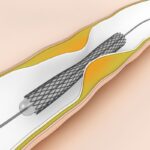Original title: Clinical Outcomes after Hybrid Coronary Revascularization versus Coronary Artery Bypass Surgery: A Meta-Analysis of 1,190 Patients. Reference: Ralf E. Harskamp et al. American Heart Journal (2014), epub ahead of print. Hybrid revascularization combines long-term patency of the mammary artery connected to the left anterior descending with minimally invasive drug-eluting stents to other injuries. This in...
Almost 40 % of those who initially receive clopidogrel then switch to prasugrel or ticagrelor in clinical practice.
Original title: In-hospital switching of oral P2Y12 inhibitor treatment in patients with acute coronary syndrome undergoing percutaneous coronary intervention: Prevalence, predictors and short-term outcome. Reference: Dimitrios Alexopoulos et al. Am Heart J 2014;167:68-76.e2. Given the availability of 3 Oral P2Y12 receptor inhibitors (clopidogrel, prasugrel, and ticagrelor) with different safety and efficacy profiles, the change from one to another...
Culprit artery only versus revascularization with ST segment elevation myocardial infarction. The discussion continues
Original title: Complete Versus Culprit-Only Revascularization for Patients with Multi-Vessel Disease Undergoing Primary Percutaneous Coronary Intervention for ST-Segment Elevation Myocardial Infarction: A Systematic Review and Meta-analysis. Reference: Kevin R et al. American Heart Journal, article in press. Primary angioplasty is the preferred reperfusion strategy in patients experiencing a STEMI as it has proven superior to fibrinolysis in reducing...
Infarct size reduction to 30 days could result in clinical benefit at one year
Original title: Intralesional abciximab and thrombus aspiration in patients with large anterior myocardial infarction: One-year results from the INFUSE-AMI trial. Reference: Stone GW et al. Circ Cardiovasc Interv. 2013;Epub ahead of print. The intra-coronary infusion of Abciximab added to thromboaspiration seems to improve outcomes at one year in patients undergoing primary angioplasty for ST-segment elevation with anterior...
Ticagrelor effective in venous bridges
Original title: Effect of ticagrelor on the outcomes of patients with prior coronary artery bypass grafo surgery: Inssights from th PLATelet inhibition and patients outcomes (PLATO) trial. Reference: Emmanouil S. Brilakis, et al. Am Heart J 2013;166:474-80 The bridge venous occlusion is a common finding in patients with previous CABG presenting with acute coronary syndrome without ST...
Everolimus Eluting Stent in multiple vessels with short SYNTAX score
Original title: A Clinical and Angiographic Study of the XIENCE V Everolimus-Eluting Coronary Stent System in the Treatment of Patients With Multivessel Coronary Artery Disease. The EXECUTIVE (EXecutive RCT: Evaluating XIENCE V in a Multi Vessel Disease) Trial. Reference: Flavio Ribichini et al. J Am Coll Cardiol Intv 2013. Article in press. Drug-eluting stents (DES ) have emerged...
Thromboaspiration in AMI, without benefit to 30 days.
Original title: Thrombus Aspiration during ST-Segment Elevation Myocardial Infarction. TASTE trial. Reference: Ole Fröbert et al. N Engl J Med 2013. DOI: 10.1056/NEJMoa1308789 One of the biggest challenges of primary angioplasty is to restore normal coronary flow. Thromboaspiration is a relatively simple, quick and cheap it can improve the flow and resolution of ST , however , the...
Complete revascularization in acute myocardial infarction. 1 culprit lesion , then all the others
Original title: Randomized Trial of Preventive Angioplasty in Myocardial Infarction (PRAMI trial). Referencia: David S. Wald et al. N Engl J Med 2013.DOI: 10.1056/NEJMoa1305520. Patients developing ST segment elevation myocardial infarction are effectively treated with primary angioplasty to responsible artery . It is unclear whether revascularized other significant lesions in other non culprit vessels will prevent future events...
Full conversion from transfemoral to transradial: similar success rate and far less complications.
Original title: Full conversion from transfemoral to transradial approach for percutaneous coronary interventions results in a similar success rate and a rapid reduction of in-hospital cardiac and vascular major events. Reference: Vincent Dangoisse et al. EuroIntervention 2013;9:345-352. Although the transfemoral approach has clear disadvantages when it comes to bleeding complications, it continues to be the preferred approach...
Transradial access plus bivalirudin, the best combination to reduce bleeding
Original title: Comparison of bivalirudin and radial access across a spectrum of preprocedural risk of bleeding in percutaneous coronary intervention: Analysis from the National Cardiovascular Data Registry. Reference: Baklanov DV et al. Circ Cardiovasc Interv. 2013, article in press. Bleeding complications are clearly associated to mortality increase and two of the current best strategies to reduce bleeding are...









